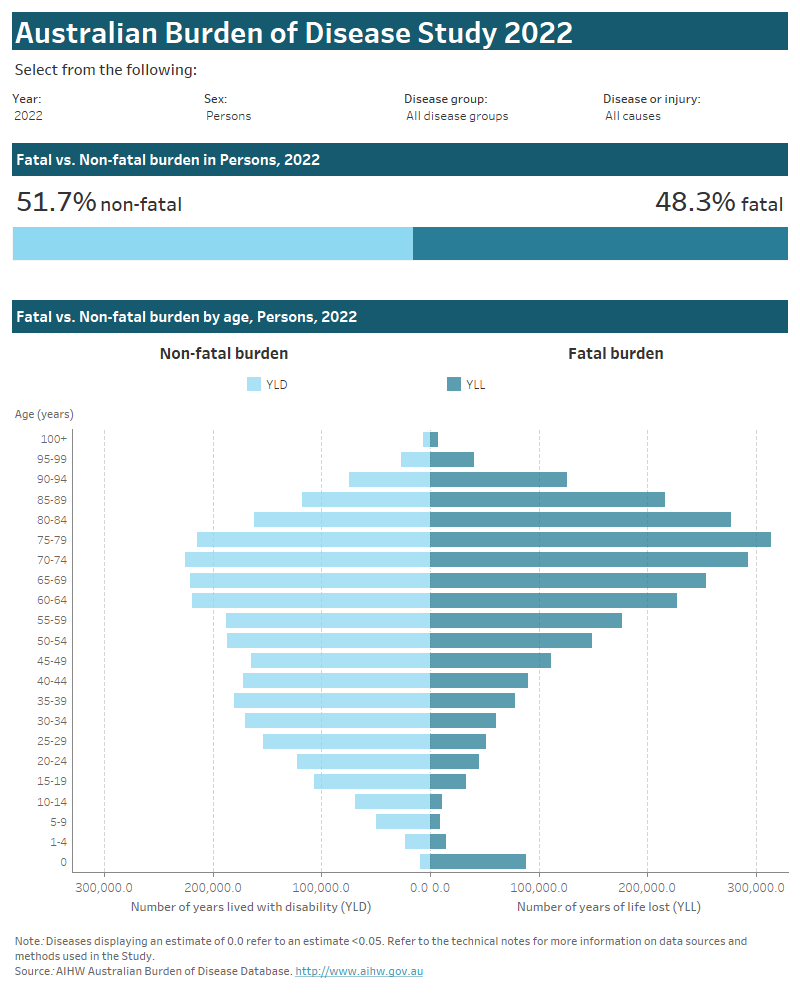Fatal vs. non-fatal burden
Burden of disease estimates are one of the few population health measures which combine health loss from living with, and dying prematurely from illness and injury.
The contribution of fatal and non-fatal burden to the total burden experienced in Australia differs by age, sex and disease. Some disease groups, such as cancers, contribute substantial fatal burden, whilst diseases which don’t usually cause death, such as back pain, contribute substantial non-fatal burden.
Use the interactive graphs to explore the contribution of fatal burden (YLL) and non-fatal burden (YLD) to the total burden of disease (DALY) in Australia by sex, age group and disease or injury for the most recent year (2022). Results for 2003, 2011, 2015 and 2018 are included for comparison.
For the first time the Study includes estimates of disease burden due to COVID-19, using data available at the time of analysis. This included data on deaths, cases and hospitalisations up until August 2022. Given the dynamic and ongoing nature of the COVID-19 pandemic, these estimates may be revised in the future as more data become available. For a discussion of results related to fatal and non-fatal burden, refer to the Summary.
Use the drop-down lists at the top of the visualisation to filter the data by year, sex, disease group and disease/injury.

Hover over the bars on the chart for additional information.
The toolbar at the bottom of the visualisation enables users to interact with the data in different ways:

Undo = Undo the latest filter applied.
Redo = Redo the latest filter applied.
Revert = Clears all filters applied and reverts visualisation to default filters.
Refresh = Connects to the underlying data source and updates the visualisation with any changes in the data (not applicable to this visualisation).
Pause = Stops the visualisation from updating each time a filter is changed, enabling multiple filters to be changed at once. Clicking ‘Resume’ will update the visualisation according to the selected filters.
Share = Generates a link that can be shared (note that filters will not be applied when link is shared).
Download = Allows a downloadable file as either an image (PNG), PDF or PowerPoint file. This is a useful way to save a snapshot of the visualisation to include in a document or presentation.
Full screen = Displays the dashboard in full screen mode (press Esc to return to original view).
This interactive data visualisation compares the amount and proportion of burden that is fatal vs. non-fatal. There are 2 sections which can be customised to report data according to year, sex, disease group and disease. The first section is a single horizontal bar which is shaded to show the proportion of total burden which is non-fatal and fatal for the selected year, sex, disease group and disease. The second section has two horizontal stacked bar charts side by side; the left bar chart represents non-fatal burden and the right bar chart represents fatal burden. Each bar shows the amount of fatal or non-fatal burden by 5-year age groups for the selected year, sex, disease group and disease.



